The Texas Chainsaw Massacre game is a new and terrifying take on asymmetrical horror
We spoke to The Texas Chainsaw Massacre developer Gun Interactive, the same team behind Friday the 13th
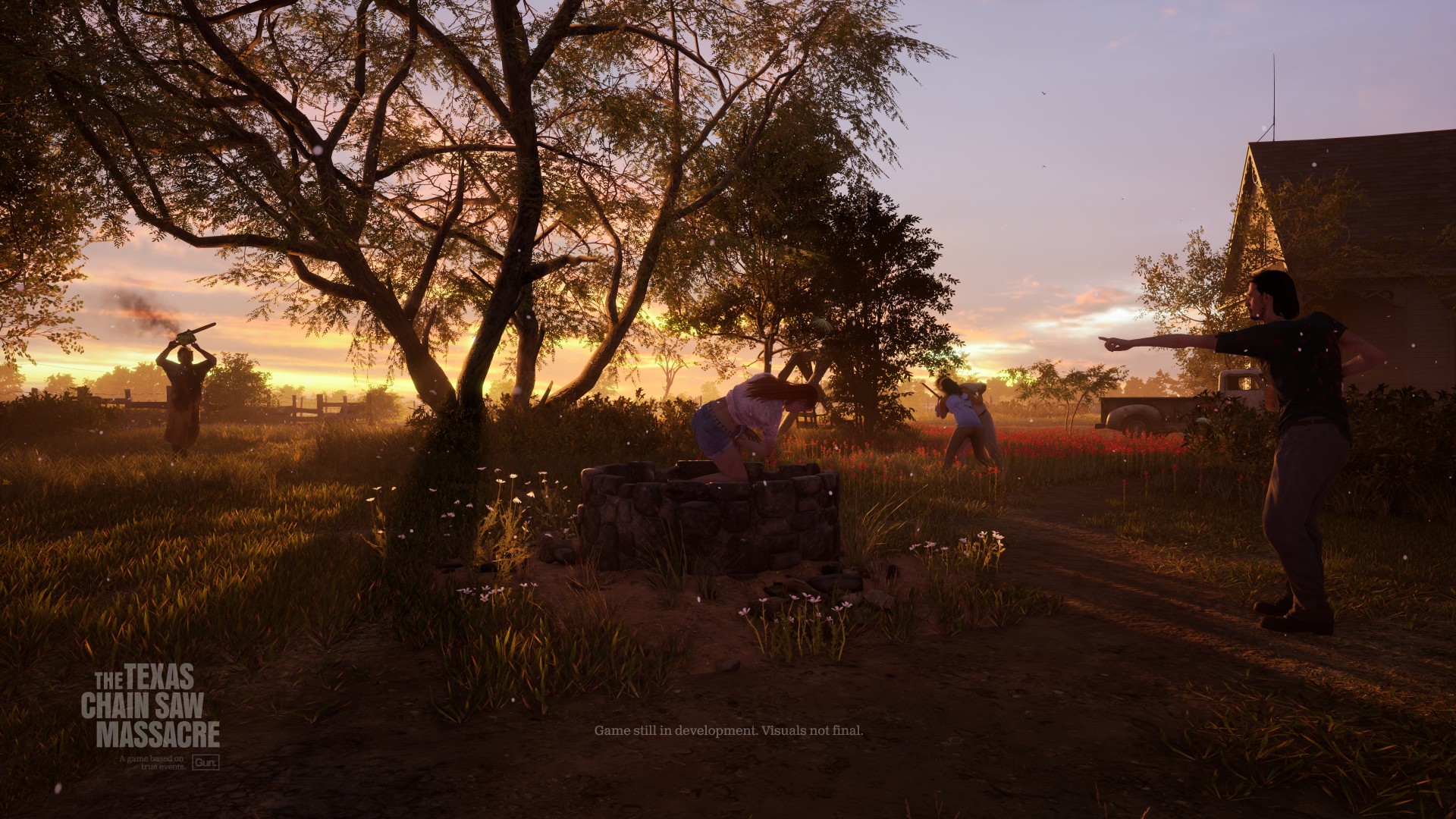
It's golden hour on a Texas homestead, and I'm limping away from a dilapidated house towards a dirt road. The Slaughter Family is at my heels, taunting me with japes and revs of a chainsaw engine. My friends are dead after being stabbed repeatedly in the driveway. Worse still, I've run out of stamina and have already been slashed several times across the face by a rangy, greasy man determined to finish me off. As I get closer to the main road, Leatherface catches up, shoves a chainsaw through my gut, and drags it straight up to my chin. The Texas Chainsaw Massacre devs scream in despair, and I can hear the yells of other team members not on game chat echoing in the background.
This new 3v4 asymmetrical horror game from Gun Interactive (the studio behind the asymmetrical Friday the 13th game) is as raucous and macabre as you'd expect, but it's certainly not a carbon copy of other games in the genre – or even their own. "We don't want to do the same thing twice," insists brand strategy lead Matthew Szep. The Texas Chainsaw Massacre is its own murderous beast, one that handles its source material with a special kind of reverence; one that favors stealthiness over brashness. The encounter above was one gruesome highlight during my hands-on time with The Texas Chainsaw Massacre, but it was far from the only one.
Survivor series
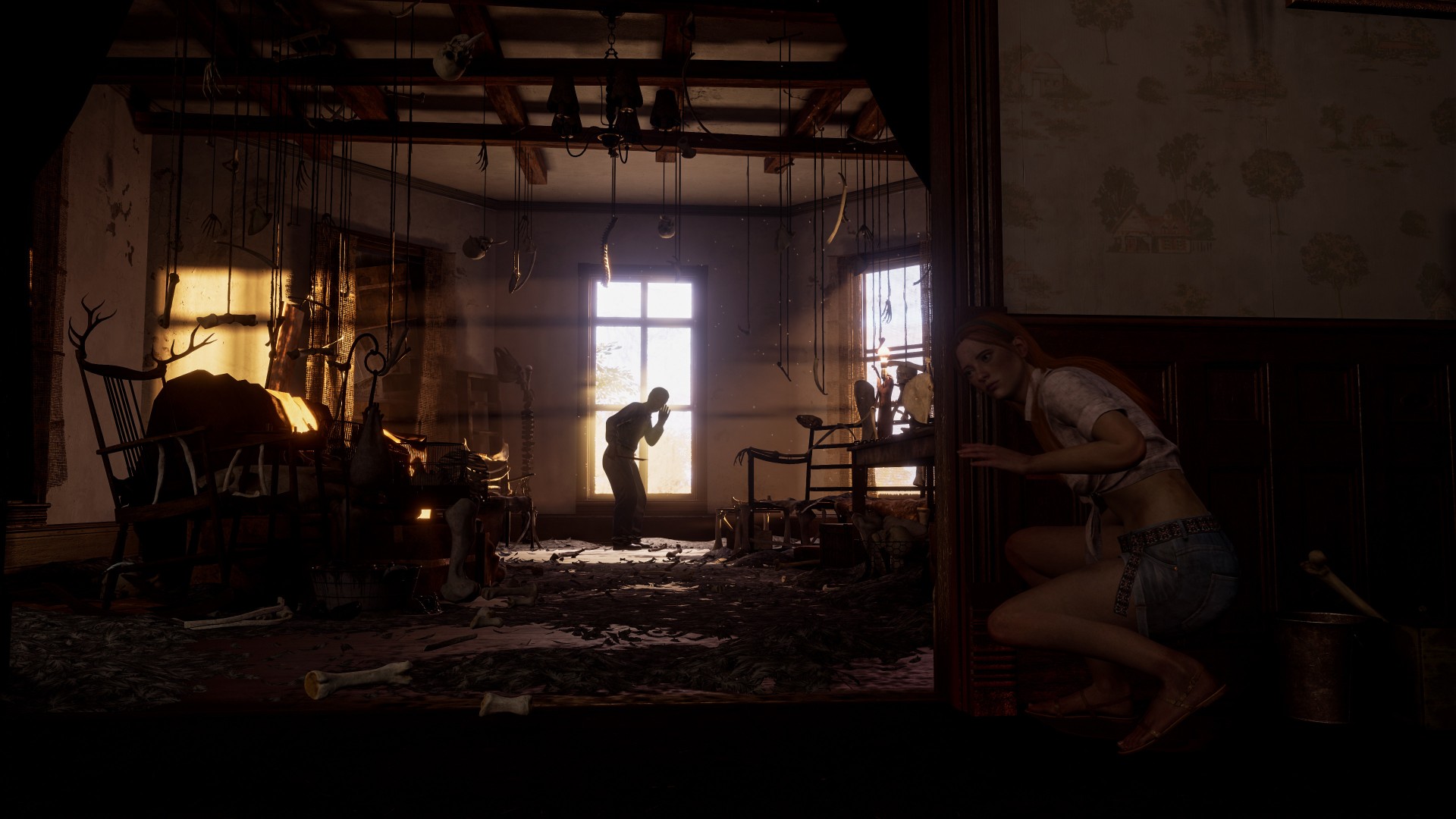
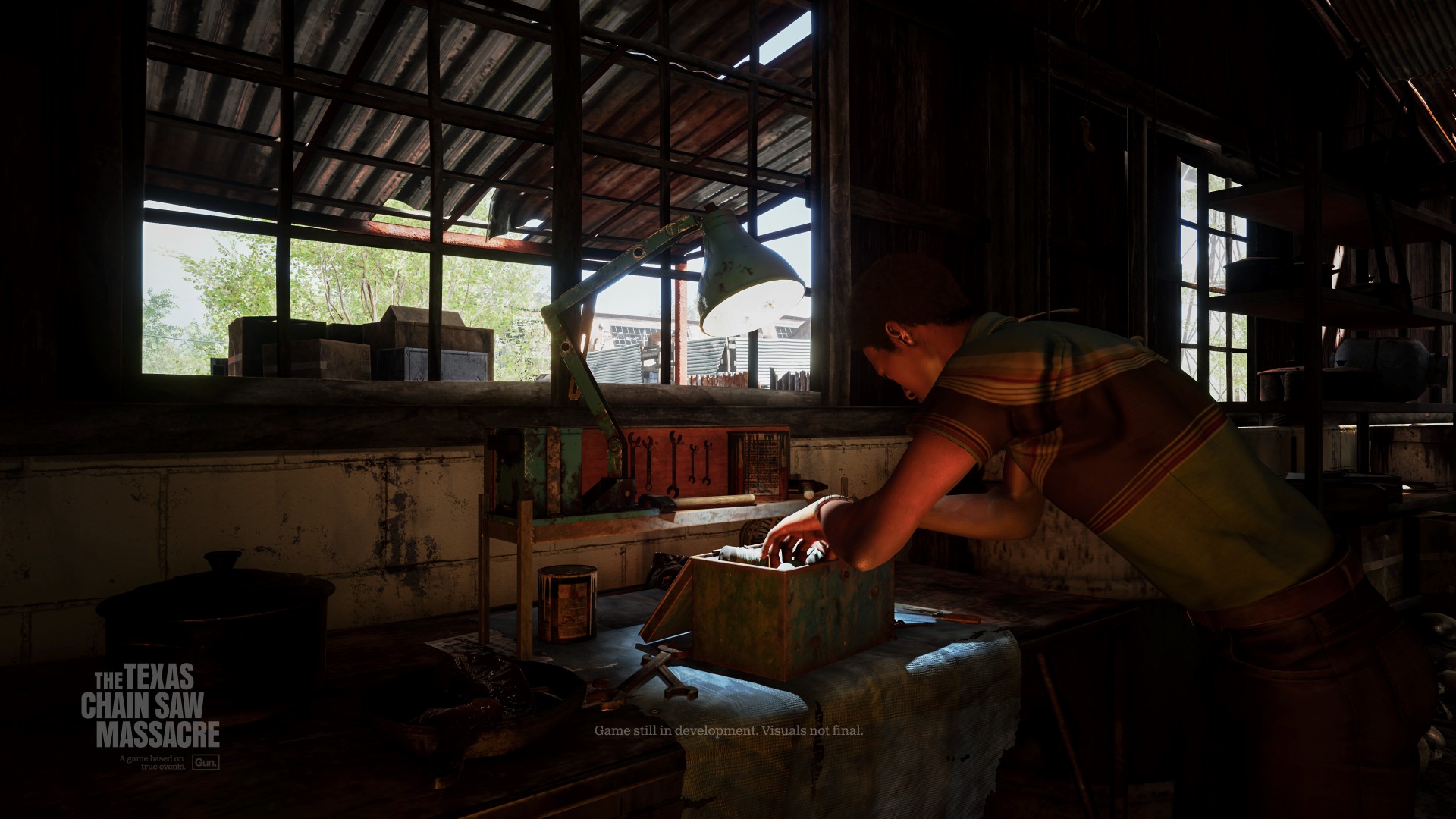
Developer: Sumo Nottingham
Publisher: Gun Interactive
Platforms: PS4, PS5, Xbox One, Xbox Series X/S, and PC
Release Date: 2023
I play my first round of The Texas Chainsaw Massacre as Connie, one of four Survivors. Connie's adept at lock-picking, and though skill trees are off-limits in this build, there'll be plenty of opportunities to shape her character when the game launches in full. Connie's lock-picking skills come in handy quickly, as the four survivors are locked in the basement of the Slaughter House with Leatherface loudly stomping through his bloodied workspace. The padlock on the door to the main floor needs to be cracked, and I'm just the woman for the job.
The Texas Chainsaw Massacre wants you to be stealthy, and that's abundantly clear from the moment our match begins. As the four of us crouch-walk around the basement, we avoid dangling bones fashioned to look like the most fucked-up version of doorway hanging beads, and desperately search for items that can help us escape. When I discover a bone shard that can be used as a weapon, interacting with it activates a rising sound meter as I fiddle with it. If I spend too long attempting to wrench the bone shard free, I'll alert our stalker, so I'm forced to take little breaks from holding down the interact button.
Wes Keltner, CEO of Gun Interactive and the game's audio and art director, tells me that the gameplay was shaped entirely by a single kernel of an idea, planted all those years ago when The Texas Chainsaw Massacre debuted. "In the original film, Sally is constantly trying to get away, and trying to use her surroundings. So that became the initial discussion of what this game is," Keltner explains. "Then we asked: 'What mechanics can we lean into if they're not fighting?' We need to be able to use stealth, use shadows, use their surroundings, try to hide, give them the slip. Then we saw how fun it was to have near-misses, where you're running around the basement and slip into a little corner that's really dark and watch Leatherface run right past you. And that's when we say: 'Okay, this is going to work, this is really good'."
What mechanics can we lean into if they're not fighting? We need to be able to use stealth, use shadows, use their surroundings, try to hide, give them the slip.
Wes Keltner, Gun Interactive
I have one of those near-misses after escaping the basement and moving up into the main floor of the home. A Slaughter Family NPC called Grandpa acts as a sort of radar device, occasionally scanning the house in search of survivors. Family members can upgrade his scanning ability by feeding him blood (yuck), and the devs playing against us do just that. As I'm upstairs trying to find tools to help me get out of the house faster, a Grandpa scan alerts the killers to our presence. Panicked, I run back down to the first floor only to see Leatherface standing a few feet away from the bottom of the staircase. I crouch behind the couch opposite Grandpa and stay there, deadly still, watching in horror as all three killers pool into the room.
"They're all in here with me," I whisper. "Oh my god help."
Sign up to the GamesRadar+ Newsletter
Weekly digests, tales from the communities you love, and more
"Resist the urge to run," Szep reminds me, referencing our pre-game pep talk. I wait there, hands trembling, until one of my teammates purposefully makes enough noise to send all three killers skulking out of the room. "Holy shit! Holy shit!" I whisper repeatedly as I run out of the house and into the blinding light of the setting sun. I am dead moments later.
Killer instinct
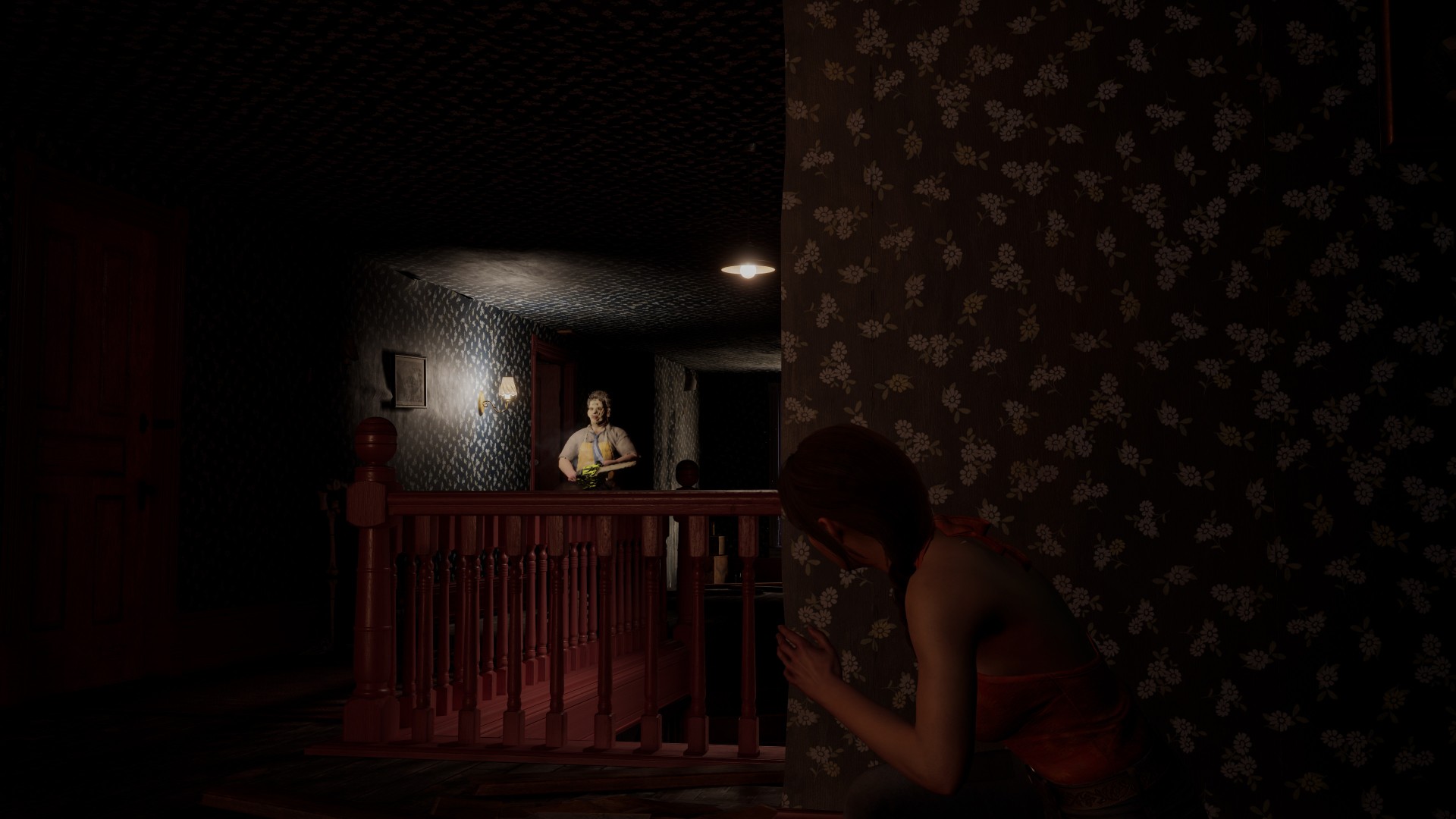
Swapping over to play as one of the murderous Slaughter Family members is fun in an entirely different way. Gun doesn't want any of these characters to feel out of place, or like any of their abilities are too "gamey." As such, the three killers are fairly grounded: Leatherface is strong and big and can one-shot kill you with his chainsaw; the Hitchhiker is lithe and fast and can set up traps around the map; and the Cook can use his hearing ability to pinpoint Survivor movement.
"At Gun, we're only going to limit the player by what fits the character, and we're going to provide all the tools that we can with the limit being gameplay. Everything starts with the prosperity and the character, and we're not going to allow you to do something that's completely out of character for this franchise," Szep explains. But within those limits, Gun makes sure to give you enough lateral movement that each killer and each survivor feel different from each other and even from match-to-match.
I played my first match as the Cook, whose hearing ability is a bit like a sonar in that triggering it brings up a jagged circle, with larger spikes indicating the general position of survivor sounds. I struggle to get the hang of it at first, but get a surge of satisfaction when I figure out how to hone in on a specific spike and pinpoint the location of a survivor for my entire squad. But it's Hitchhiker who I'm instantly drawn to – when I play the second match as him, I single-handedly kill three out of four Survivors thanks in large part to my traps. I purposefully set them in high-traffic areas, snagging enemy players in moments when they think they're safe. "A little bit of troll behavior," Szep points out when I admit I loved playing as him.
"If you give the player that's playing the Family the tools to play in different ways, now you leave it up to them and their own creativity, their own way that they wanna play. This creates more interesting gameplay that changes every single time you play – things are going to happen differently," Keltner explains.
And…. scene
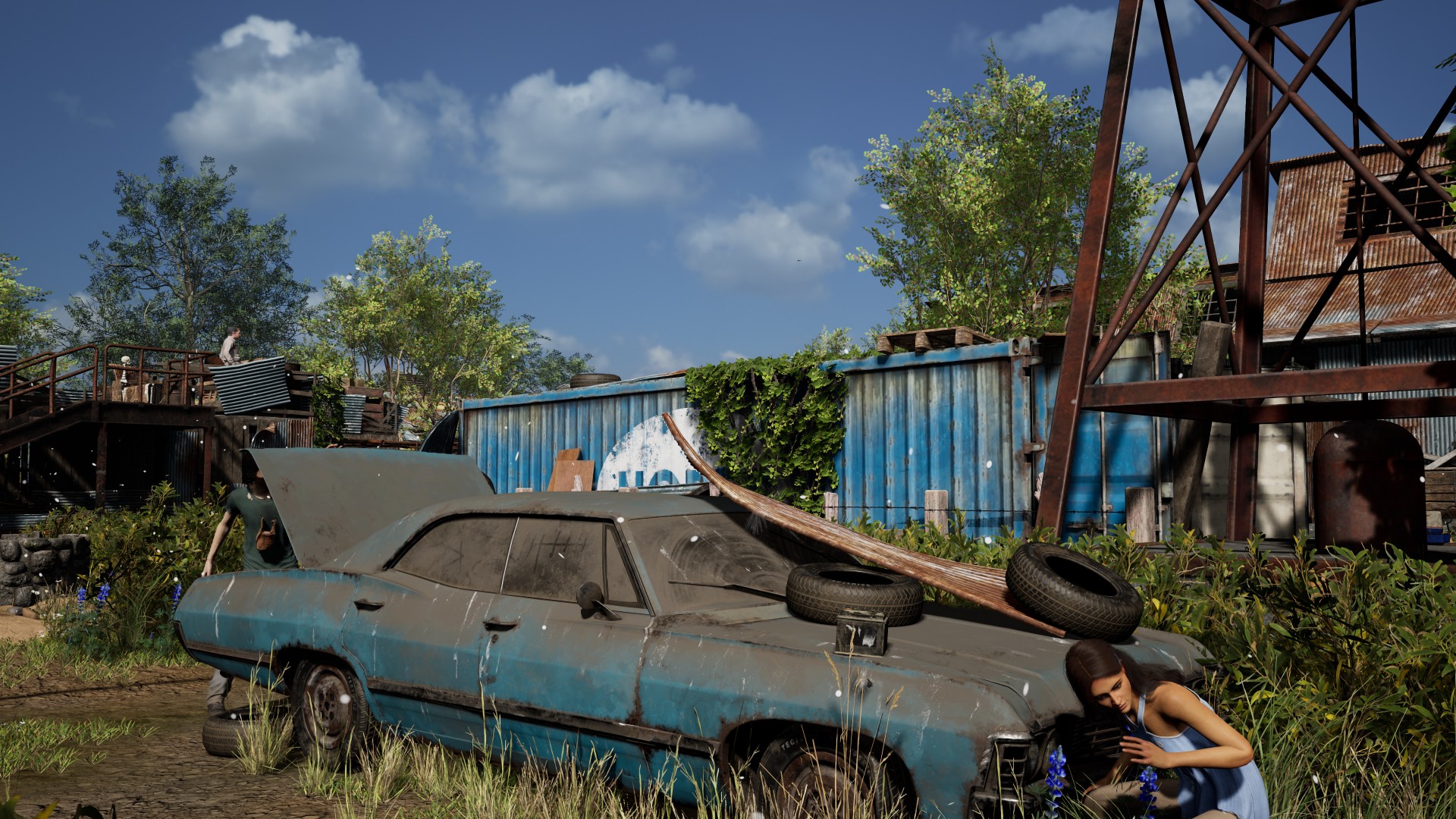
The Texas Chainsaw Massacre's gameplay mimics the three acts of a film, with the final daylight showdown designed to mirror the third act of the original movie. Just like the groundbreaking film, I emerge after a thoroughly harrowing experience, blinking in the sunlight of a Texas homestead. It's jarring, and has the same effect that the original film did – it feels even more fucked up to be a part of such horrors in broad daylight.
The game's three acts help ramp up the fear factor, as the transition from extreme stealth in the basement to the freedom of the main floor of the house may tempt you to bust out of the front door and make a run for the street. But there's an electric perimeter fence you'll need to shut down, and the potential to set off the Cook's sonar scan. "The game makes you fight your base urge," Szep says. "We want to make sure that the match flows in a way that feels natural – if you naturally feel that it's time to burse out and make a break for the driveway, by all means, do that. But there's a certain level of difficulty there."
Szep suggests that the fight against your gut instincts and the consistent push/pull of stealth and speed is yet another way the game ties into the film. "It happens an awful lot in the'74 film that Sally thinks she's safe and finds out she isn't. We have those constant resets of moments, and we force you to fight your urges….We didn't want this to be some crazy combat game, we wanted it to make sense for The Texas Chainsaw Massacre property."
Home on the range
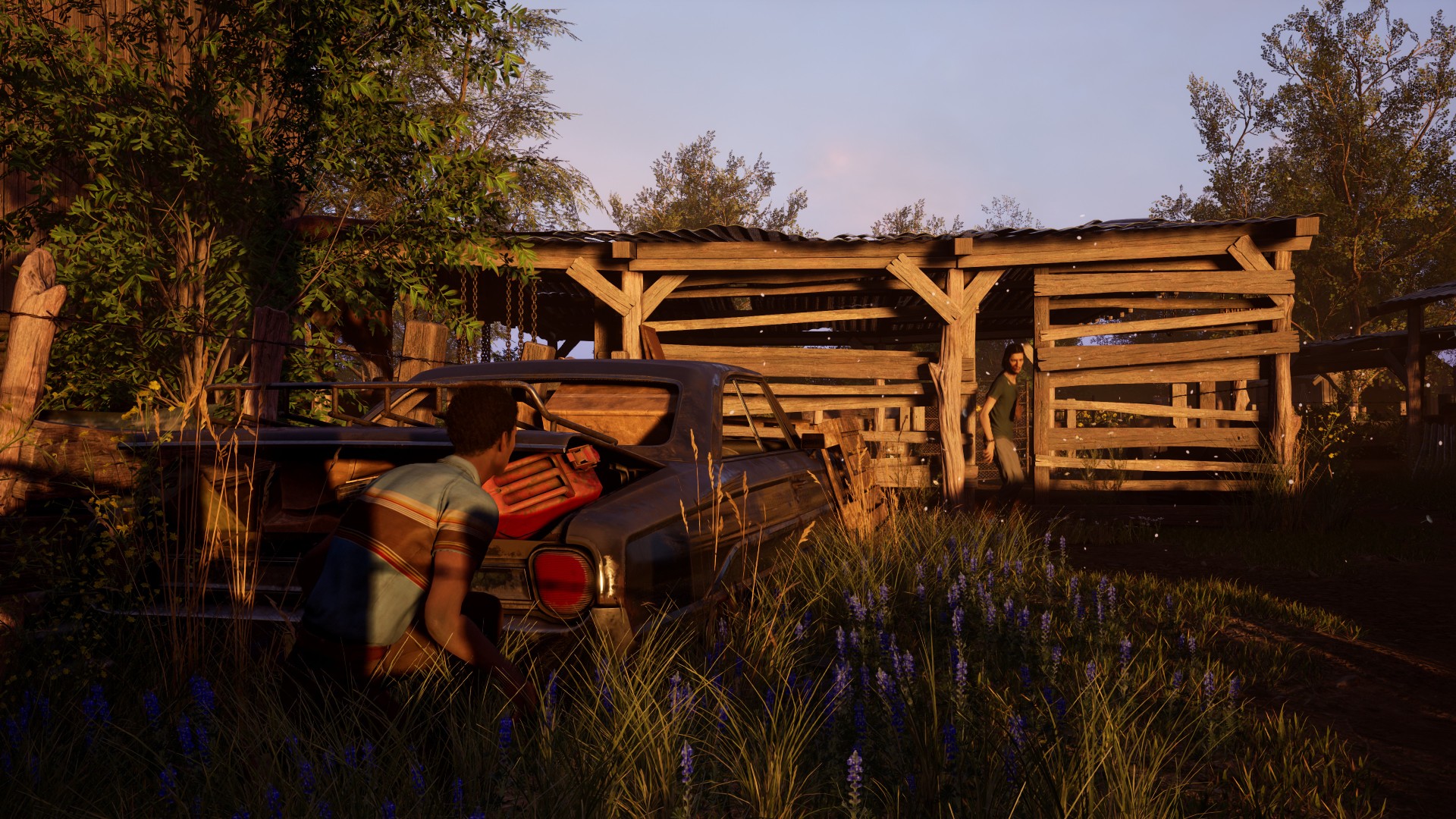
"It's unlikely players will realize the devs sourced and 3D scanned the exact chainsaw make and model used in the 1974 movie, but it's this kind of set dressing that will give players an intangible, but imperative, sense of place and space."
Gun Interactive hasn't just imbued The Texas Chainsaw Massacre gameplay with all the spirit of its source material – they've woven its influence through visuals, audio, character design, and more. The team rebuilt the Slaughter family home with an attention to detail that even they will admit is obsessive: they traveled to Texas and took hundreds of photos of flora and fauna, and they recorded the sounds of the local birds that would be in that specific region at that specific time. "We're super nerds here," Szep admits. "We're really into horror stuff, so we really like to dig deep into the DNA and bring those things to life in the game. We realized that the overwhelming majority of people that play our games are not going to realize that that lamp in the corner is the exact lamp from the movie – some super fans will notice it, other people, they don't, and that's okay. Because it's important to us at Gun that we're approaching a film like this with a white glove sort of reverence."
So while it's unlikely that the average player will realize the team sourced out and 3D scanned the exact chainsaw make and model that actor Gunnar Hansen whips around in the 1974 movie, it's this kind of set dressing that will give players an intangible, but imperative, sense of place and space. And it's that attention to detail that when combined with innovative and thoughtful gameplay mechanics makes The Texas Chainsaw Massacre a game to have on your radar.
The Texas Chainsaw Massacre will launch sometime in 2023 for PS4, PS5, Xbox One, Xbox Series X/S, and PC.
Think you're tough? Try out the best horror games and ask yourself again.
Alyssa Mercante is an editor and features writer at GamesRadar based out of Brooklyn, NY. Prior to entering the industry, she got her Masters's degree in Modern and Contemporary Literature at Newcastle University with a dissertation focusing on contemporary indie games. She spends most of her time playing competitive shooters and in-depth RPGs and was recently on a PAX Panel about the best bars in video games. In her spare time Alyssa rescues cats, practices her Italian, and plays soccer.



